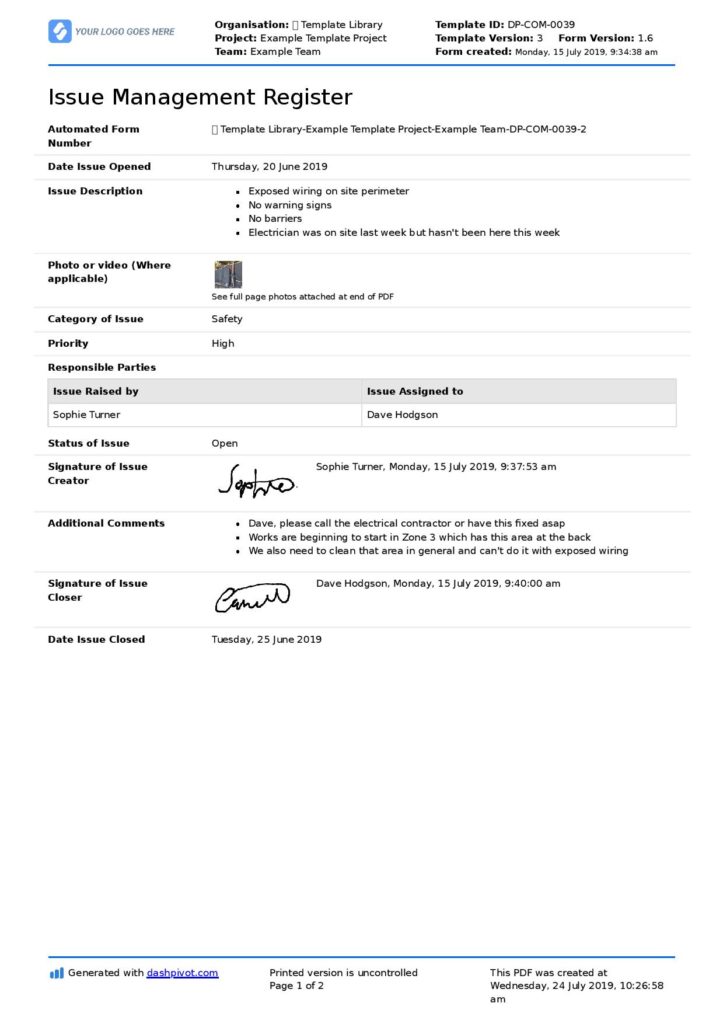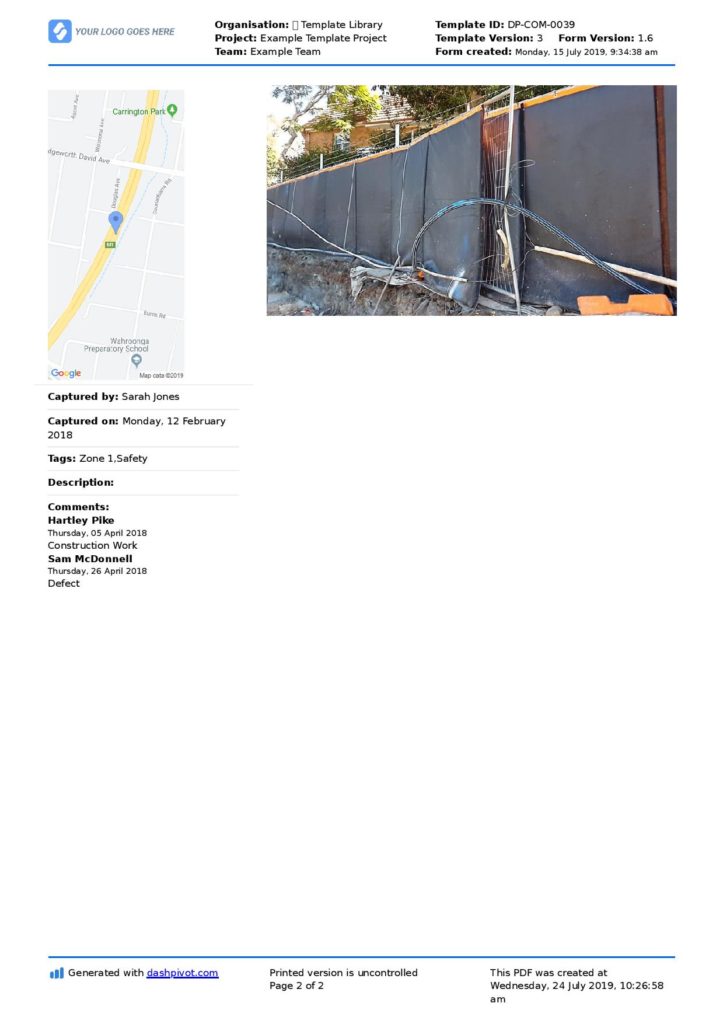Commercial – Project issue management

Project Issue Management
What is project issue management?
Project issue management is the systematic process a company or project engages in to identify, manage and resolve issues as quickly and effectively as possible.
Most issues are inherently unexpected, which is the reason they arise (otherwise you would eliminate the issue at the source), so the purpose of issue management is to create a repeatable framework and process by which a company can spot and rectify issues before they snowball into something more damaging.
A faster a company can rectify issues (which are almost inevitable), the more likely the company's projects will remain on track and on budget.
The need for project issue management arises from all sorts of project issues including:
- Commercial issues like variations and change orders
- Contractual issues like delayed payments or disputes
- Safety issues like an unexpected incident or poor safety KPI results
- Financial issues like a lack of project funding
- Production issues like supplier and material delays
- Environmental issues like an unexpected oil spill
- Quality issues like defects
The type of industry and projects you work on will have the most significant impact on the type and frequency of project issues you encounter.
As you can imagine, project issue management is a broad topic, and one which a lot of project managers and academics have spent time studying and attempting to optimise.
We are going to look at some practical ways and approaches to better project issue management which are applicable to almost all project-based companies.
A project issue vs. project risk
One of the biggest layers of confusion when it comes to project issue management is the difference between a project issue and a project risk - which then impacts how a company manages either or both.
The major difference between an issue and a risk is that an issue is occurring now, while a risk has the potential to occur.
Another nuance but important difference is that you can generally summarise risks quite well before a project or during a project, whereas issues are more unexpected.
Sometimes risks turn into issues, and sometimes issues are completely unexpected and happen without warning.
A good example of this important difference:
Project risk - You may identify a lack of human resources as a project risk, based on the fact that this has happened on projects in the past
Project issue - A project issue arises when two of your three labourers get injured in two days, meaning you don't have the resources to maintain your site as planned
As you can see in this example, the risk did in some ways eventuate into the actual issue, but the risk was much broader.
While the project manager or company identified the fact that a resource shortage was a risk on this project, they obviously couldn't have foreseen the exact circumstances of the risk eventuating - which in this case was the two labourers getting injured in quick succession. Because of the unknown nature of the issues, the company could not have planned to have a couple of additional labourers ready to go.
How to identify, assess and control project issues
The purpose of project issue management is to create a framework which can be applied to many or all issues. You may have specific procedures for safety issues, financial issues, environmental issues etc. but keeping your 'process' and workflows as standardised and simple as possible will improve the outcomes of your project issue management.
The first step of solving any project issue is to of course identify the issue. If you don't know the issue exists, then you definitely can't solve it. And if you leave the issue too long, then rectifying it becomes more and more difficult and the likelihood that it will impact other parts of the project increases.
In general, project issue management falls into four (4) buckets:
- Major problem: A major problem is one that requires immediate attention, because it is likely to impact the project
- Concern: A concern is an issue which you need stay on top of because it could develop into an ongoing or major problem
- Situation: A situation is typically an isolated concern which occurred because of of a specific situation. These situations need to be monitored to ensure there is not a pattern of situations
- Opportunity: The word issue has a negative connotation, but some issues become opportunities. For example, if a machine unexpected fails, you may have an opportunity to buy a new better machine
Like most parts of project management, the way in which these issues are identified, assessed and controlled is by documenting them either on site or in the field, or in the office.
A project or company may have specific processes for identifying specific functional issues - like hazard identification - or they may document and track all of their issues in a single issue log.
Once identified and documented, the project issue management focus shifts to assessing the different issues and then implementing control measures for those issues. Once again, this process should be fairly systematic and standardised through frameworks like risk matrix and the hierarchy of risk control.
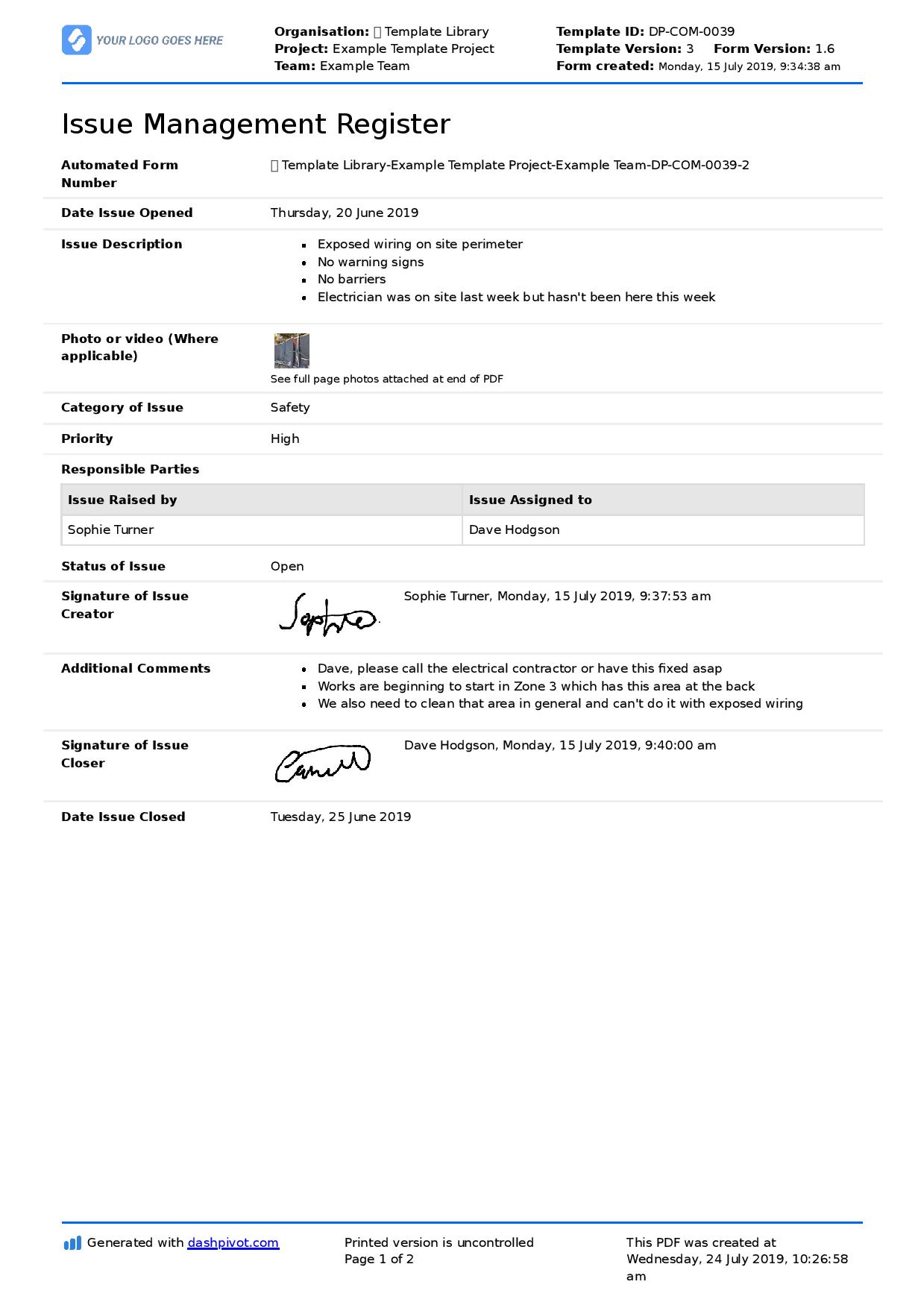
Use this project issue management framework for free.
How to better document and track project issues
As we previously mentioned, the idea behind project issue management is to create a reliable method for identifying and responding to issues quickly.
While the actual procedures you establish are important, as well as how people are trained in understanding these procedures, the tools and systems you use to document and track project issues are equally important.
To better understand this, let's look at what an efficient project issue management approach looks like today - and how seamless the process is made through issue management software.
Raising and identifying issues
The method by which you raise and identify issues can have a dramatic impact on how often and how quickly issues are raised.
If you use paper forms or PDFs to raise issues on site, then a supervisor or worker needs to grab the right piece of paper, fill it in on site, scan and upload it and then email it to the right person.
The number of steps involved in the process creates a lot of friction, increases the chance of manual data entry errors, and also delays the issue getting to the right person quickly.
As an example of how much project issue management can be improved at this stage, imagine if this person could instead open up their mobile or tablet when an issue arises.
They can select from a number of standardised templates depending on what the issue is (safety, environmental etc.), and then fill in all of the information straight away. The issue is then synced to the office in real-time, where the record is placed in the right place and stored securely.
This type of approach to project issue management speeds up information flow and reduces the chance of missing or wrong information.
Tracking and assigning responsibility to specific people
On top of dramatically improving how issue records are stored, the project issue management process can be further improved by creating standardised and automated assignment rules.
Instead of having to email an issue or issue log to a specific project manager, the minute an issue is logged on site, this information is then sent to the office in real-time, where the project manager or person responsible for that specific issue gets an instant notification.
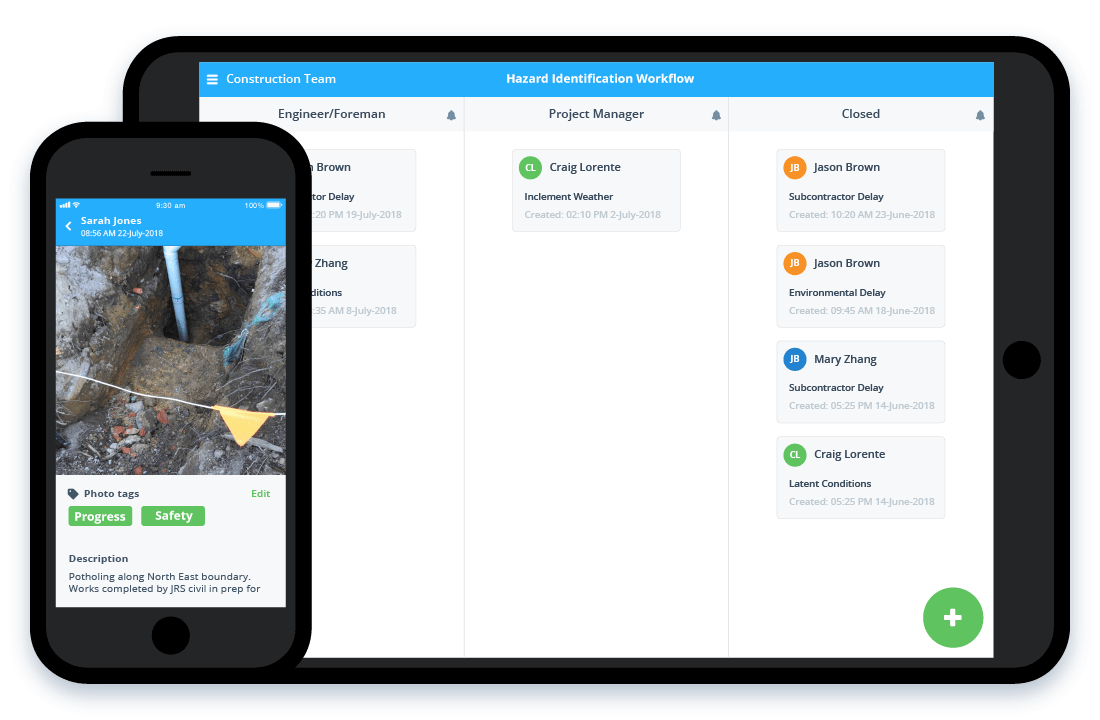
Prioritising issues
While the issue may be resolved or actioned by the project manager or function-specific manager like in the previous example, the issue raised may need to be discussed or escalated beyond a specific function or person.
It's in this case that a lot of time and energy is wasted on projects when information is managed manually.
All of the information which has been collected and aggregated then needs to be transferred to the company risk register or issue register, which requires more admin time and more delays. It then takes time for the company to come together and discuss the issues before they even think about control measures or solutions.
Monitoring issue resolutions and project outcomes
Once the company does get around to implementing control measures and issue resolutions, project issue management comes full circle and the company needs to assess how well it handled the issues.
Tooling can become really important here too. Attempting to analyse your controls and understand performance through disparate sheets and documents is very difficult. But being able to display your data in charts and dashboards which have been keeping track of all of your information in real-time saves an incredible amount of time whilst also improving the accuracy and reliability of your data.
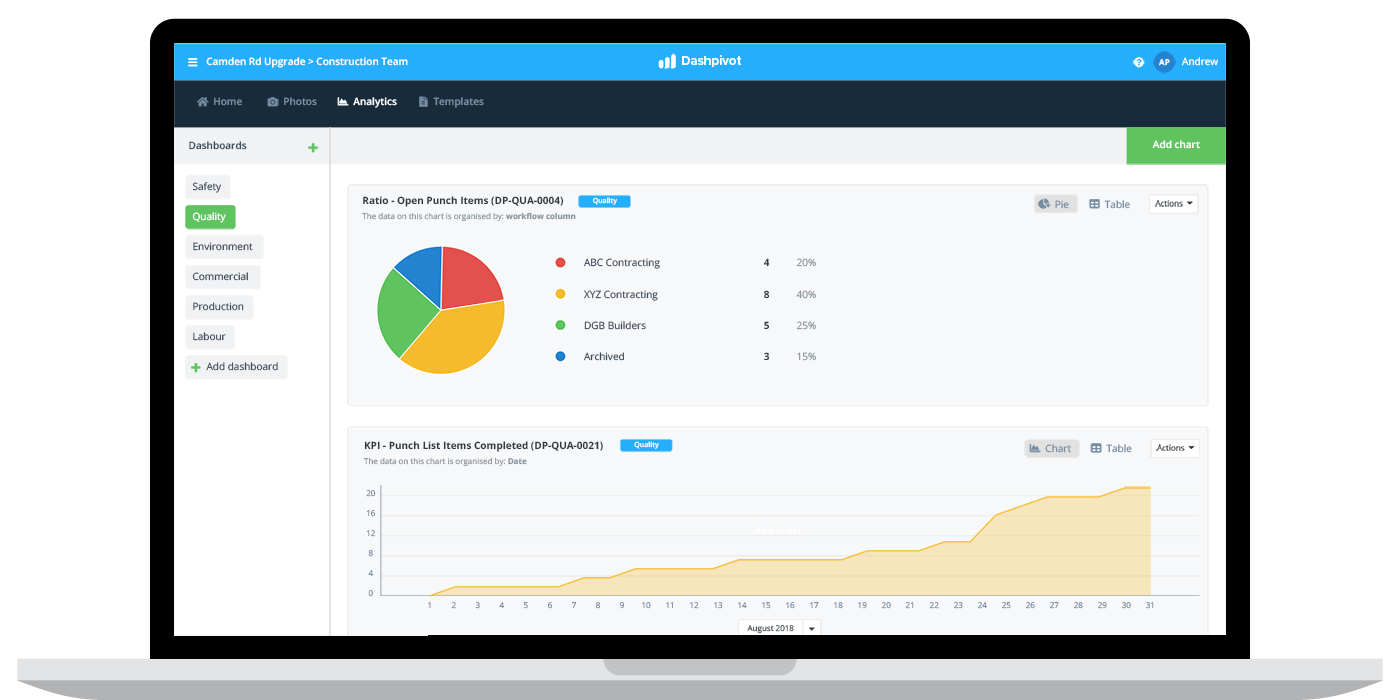
Tips for better managing project issues, no matter what they are
On top of implementing better systems, there are some universally applicable tips which you can apply to your project issue management approach which will at least improve your chances of handling issues effectively.
These tips and tricks include:
Logging everything - Making sure workers document as many issues (and potential issues) as possible is a great way to stop issues from snowballing. Part of logging everything comes down to how people can log issues (the systems mentioned above), and the other part comes down to ensuring that people are encouraged to report issues. They feel comfortable and safe in taking a few minutes to report an issue to a supervisor or manager.
Escalating appropriately - One of the major flaws in many companies project issue management comes from how they escalate issues. Having people report the right issue to the wrong person is a great way to stop it getting resolved, and having too many bottlenecks and people to push information through is the best way to delay issue resolutions.
Setting up proper workflows and flowcharts for how information moves is critical to getting escalation right.
Re-visiting the status of issues regularly - As we previously touched on, many companies categorise project issues to better prioritise them. Re-visiting the status of issues regularly is a great way to prevent issues from escalating or sneaking up on you.
Keeping people informed - Project issue management is a team and company effort. Keeping everyone informed and involved in the project issue management processes as well as up-to-date on the nature and severity of issues is the best way to hold everyone accountable for reducing issues and improving project outcomes.
Apply some of these tips to your current project issue management approach, and use some of the templates or smart systems available to you today to better improve how you manage and rectify issues.
It will go a long way to ensuring that your projects (and company) are more successful more often.
